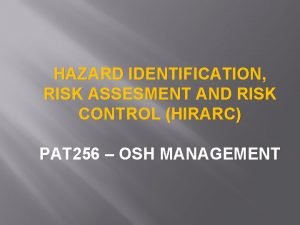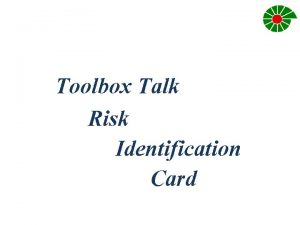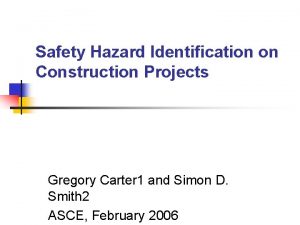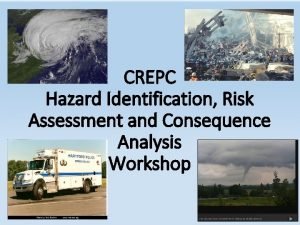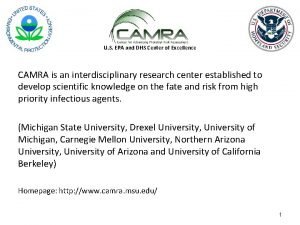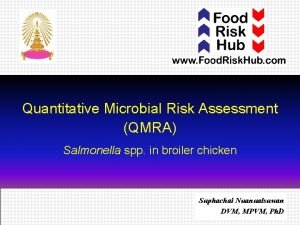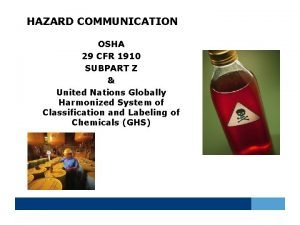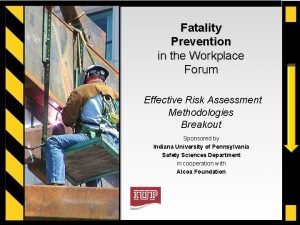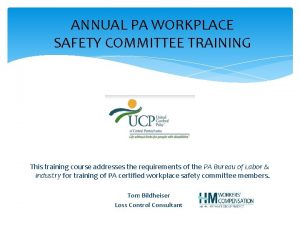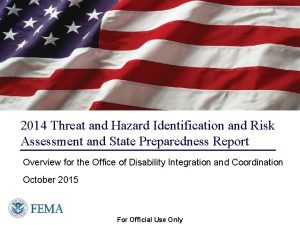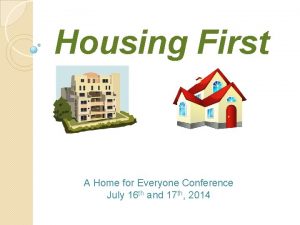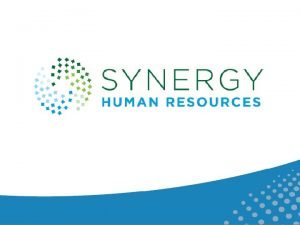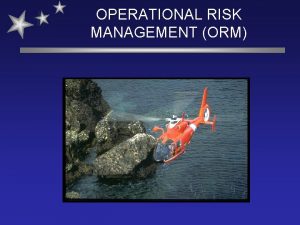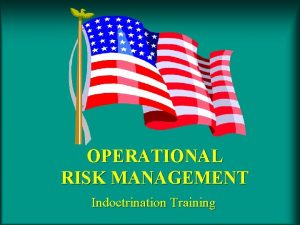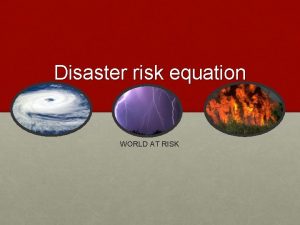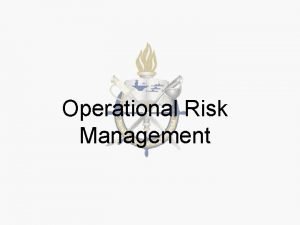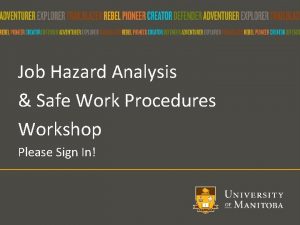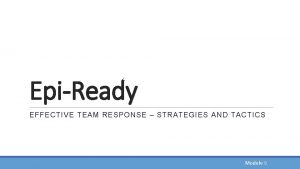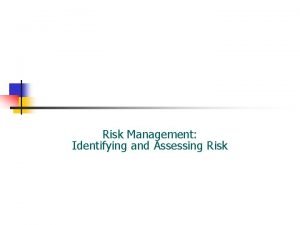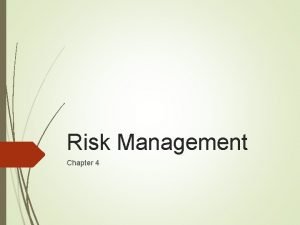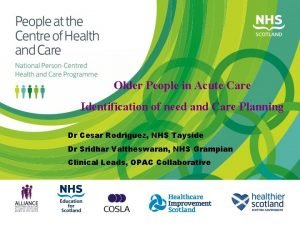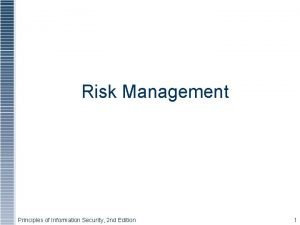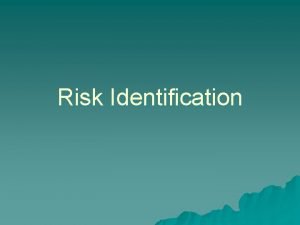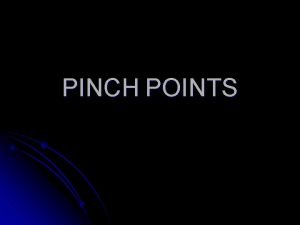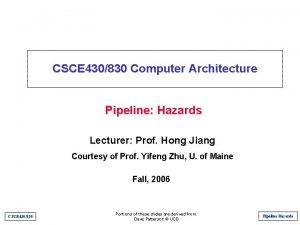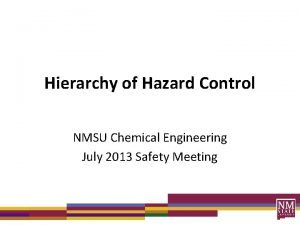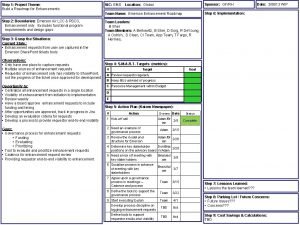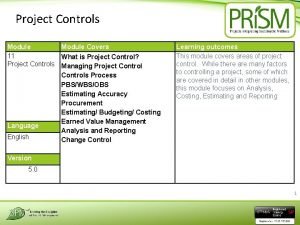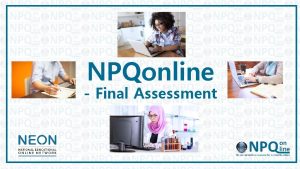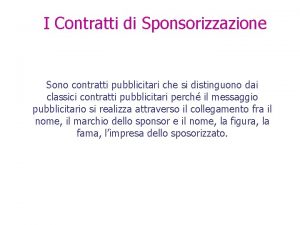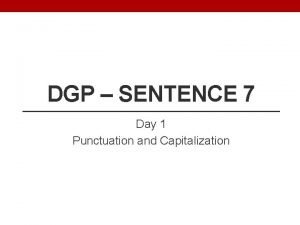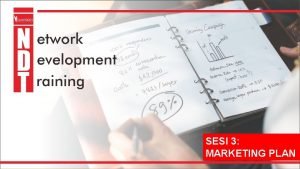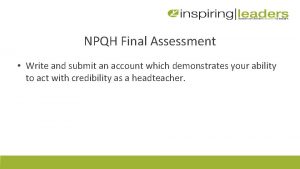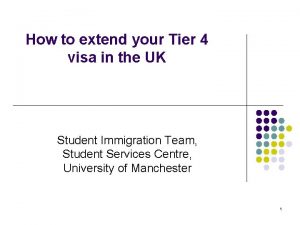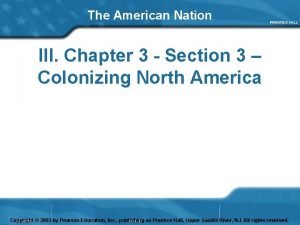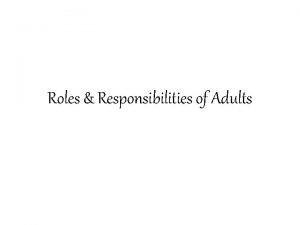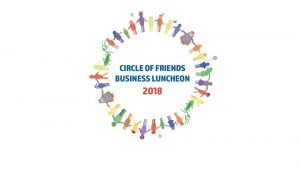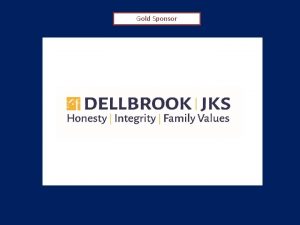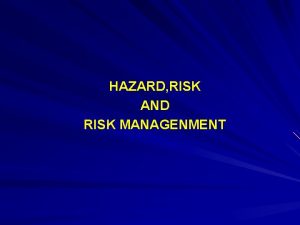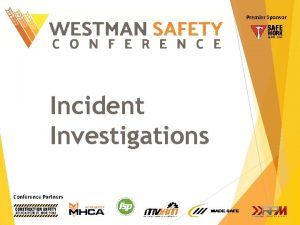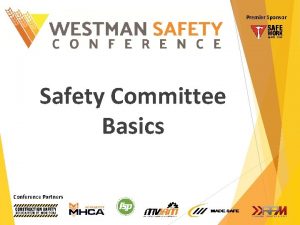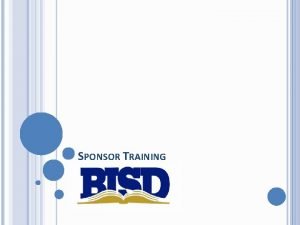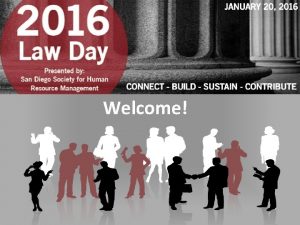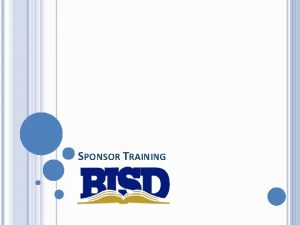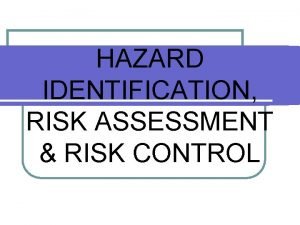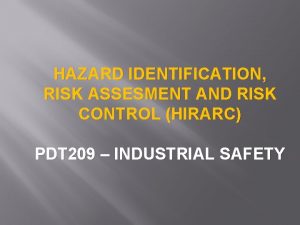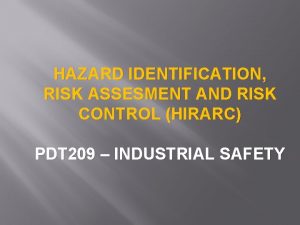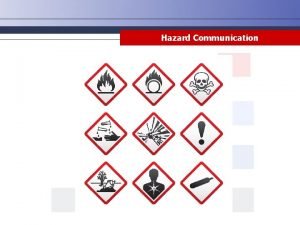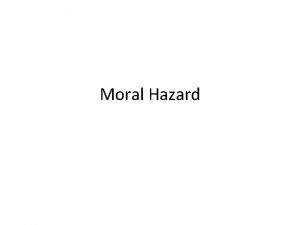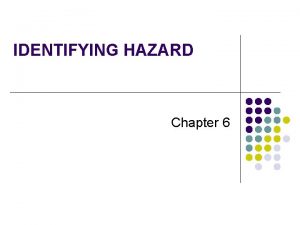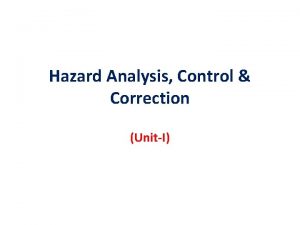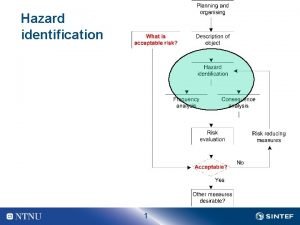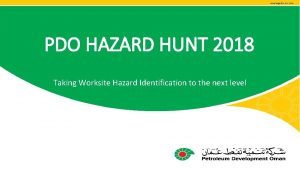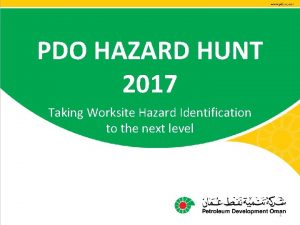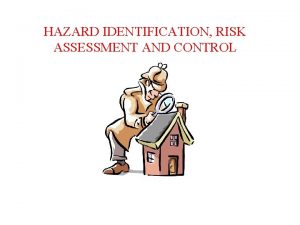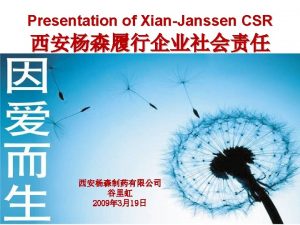Premier Sponsor Hazard Identification Risk Control Conference Partners
















































- Slides: 48

Premier Sponsor Hazard Identification & Risk Control Conference Partners

Housekeeping • Exits • Breaks • First Aid • Restrooms

Rules of the Room Participate in the discussion Avoid private conversations when someone else is speaking Get the most out of your classroom experience Say what you think, be respectful, and stick to the topic Devices on silent – use for emergencies only please

Agenda • Benefits of Hazard Identification and Risk Control • Legislation • Hazard Identification • Risk • Control/Corrective Action • Job Hazard Analysis (JHA) • Safe Work Procedures (SWP’s)

Course Objectives Participants will: • identify and categorize hazards • conduct a Job Hazard Analysis • create a safe work procedure • assess risk • select appropriate control measures

Introductions Please share: • Your name • Position and company you work for • Your “pet peeve” hazard (does not need to be work related)

Definitions Hazard: A hazard is any source of potential damage, harm or adverse health effects on something or someone Risk: product of the consequence and probability of a hazardous event; The possibility of loss, injury, or other adverse circumstance

Benefits The addition of hazard control duties to the workplace can be an adjustment for employers and workers. What are the benefits to having a HIRC process at work?

Benefits • Prevent incidents • Increased safety culture and trust in the employer • Engaged workforce – opens lines of communication • Decreased costs associated with incidents • Cost savings on equipment and tools • Legal compliance • Positive impact on Safe Work Certified audit

Legislation The Workplace Safety and Health Act and Regulation is the legislation that governs the majority of workplaces in Manitoba. Legislation is the law, it is the minimum of what must be complied with in regards to safety and health activities at work.

Legislation Hazard identification and control falls under the Act section 7. 4(5)(b): A workplace safety and health program must include the identification of existing and potential dangers to workers at the workplace and the measures that will be taken to reduce, eliminate or control those dangers, including emergency procedures.

Hazard Identification

What is a hazard? Any source of potential injury, harm or adverse health effects on someone or something at the workplace. Hazards types: • • • Physical Musculoskeletal/Ergonomic Chemical Biological Psychosocial

Physical Hazards that create physical injury such as being struck by moving equipment, pinching, cuts, crushing, etc. Examples: • • • Moving equipment and machinery (lifts) Noise (impact gun) Unguarded equipment (grinders) Slippery or clogged floors (spilled oil, housekeeping) Blocked doorways (parts stacked in front of emergency exit) Vehicles

Musculoskeletal Hazards (MSI) Injury or disorder to soft tissue (muscle, tendon, etc. ) Potential Causes: • • Overexertion (i. e: while pulling, pushing, lifting, prying) Twisting and turning of body while handling materials Vibration Repetitive movements Awkward positioning Contact pressure Temperature extremes

Chemical Hazards Exposure to products can cause immediate or long term health effects to workers. • • Exhaust Fumes Gas/diesel fuel Asbestos Welding fumes • • Paint/Isocyanates Solvents Engine additives Cleaning solutions

Biological Hazards Risks from organisms and organic materials • Blood and bodily fluids • Rodents, feces • Mold

Psychosocial Hazards Are hazards that affect the psychological well-being of workers, including their ability to participate in a work environment among other people. Examples of psychosocial hazards • • Occupational demands (shift work, production pressure) Workplace violence Harassment and bullying Phobias

Learning Activity Using the table in the workbook, list examples of each hazard type from your industry.

PHYSICAL MUSCULOSKELETAL CHEMICAL BIOLOGICAL PSYCHOSOCIAL

RISK

Risk What is risk? Risk is the likelihood that a person will be harmed or experience an adverse health effect if exposed to a hazard, and to what extent.

Risk Assessment What is a risk assessment? A risk assessment is a tool used to help prioritize and rank hazards by assessing 3 things with the goal of establishing a critical rating: 1. Severity, consequence if an incident occurs 2. Probability, likelihood of incident 3. Frequency, how often is a worker exposed to the hazard

Risk Assessment Critical rating can be used to prioritize control activities.

Group Learning Activity • Using 3 hazards from your workplace, assess the risk of each using the tool provided • Identify the Critical Rating • Which of your hazards would be the top priority to control based on your assessment?

CONTROL MEASURES

Control Measures What is a control measure? A control measure is an action, process, material, or equipment that can be used to reduce or eliminate the risk of a hazard

Control Measures At the Source Along the Path At worker level

Control Measures Hierarchy of Controls 1. Elimination 2. Substitution – alternate equipment, materials, etc. , or transfer risk to third party 3. Engineering Controls – physical controls for facilities and equipment 4. Administrative Controls – procedures, rules, training, etc. 5. Personal Protective Equipment – last line of defense

Control Measures Hierarchy of Controls – Pros & Cons • Engineering Controls – assist in error-proofing • Administrative Controls – rely on compliance and understanding • Personal Protective Equipment – rely on compliance; assume contact with hazardous energy or substances is likely

Control Measures At the source: Where the hazard “comes from” • Elimination • Substitution • Redesign • Isolation • Automation Engineered Controls

Control Measures Along the path: • Guarding • Ventilation • Absorption • Dilution Engineered Controls

Control Measures At worker level: • Training and communication • Safe work practices and procedures Administrative Controls • Personal protective equipment PPE should always be considered the last line of defense

Control Measures Multiple Controls • A robust control plan may benefit from or require multiple controls for one hazard, machine, process, etc. • Provides several overlapping lines of defense • The flaws or weaknesses of one control may allow the incident to occur unless a second control is in place as a backup

Group Learning Activity Using your top priority hazard from the risk matrix exercise, fill in the hazard control worksheet to determine the various control measure options.

Job Hazard Analysis (JHA)

Job Hazard Analysis (JHA) JHA is a process used to identify potential hazards by reviewing each step of a job with the purpose of developing a safe work procedure.

Critical Job Inventory An employer should establish a Critical Job Inventory (CJI) of all jobs that include an element of risk. The easiest method for establishing a CJI is to list all jobs, tasks, and machine/equipment operations that are standard to your business and assess the following for each • Hazards • Current Controls • Risk

Job Hazard Analysis (JHA) JHAs should be conducted in order of priority. Priority can be assigned based on risk level/critical rating from risk assessments in the CJI, or based on other factors such as open improvement orders, committee recommendations, recent incident trends, etc.

Job Hazard Analysis (JHA) Basic steps to JHAs 1. 2. 3. 4. Select the job based on priority (critical rating) Break down the job into a sequence of steps Identify potential hazards for each step Select current control measures for each step

Job Hazard Analysis (JHA) Guidelines for doing an analysis: • • Observe the task you are analyzing Ask questions to clarify during observations Discuss with workers familiar with the task Review pictures or videos of the task Keep the steps in their specific sequence Study the job itself, not being critical of the worker Document the approved process - not deviations

Learning Activity • Using the sample JHA provided, fill out the form using the task of changing a tire.

Safe Work Procedures (SWPs)

Safe Work Procedures A Safe Work Procedure (SWP) is a step by step description of a process where deviation may cause a loss. It is generally created to describe the safest and most efficient way to perform a task.

Safe Work Procedures Employers are legally required to consult with committee members/representative in the creation of safe work procedures. Safe work procedures are legally required to be documented, a Workplace Safety and Health Inspector may request to see them during an inspection. • This is often the initial focus of a WSH investigation

Safe Work Procedures The employer is required to train workers in a manner that ensures the workers are able to demonstrate consistently and correctly that they follow safe work procedures. Means of training: • • Orientation Specific SWP training Mentorship/job shadowing On the job training

Safe Work Procedures Employers are responsible for: • Development of workplace specific procedures • Providing sufficient training in procedures • Ensuring enforcement of the use of procedures Workers are responsible for: • Following the procedure as written and taught • Using all required equipment and PPE • Reporting any hazards not controlled by the safe work procedure

Learning Activity Using the JHA we completed for Changing a Tire, write out a Safe Work Procedure.
 Example of hirarc table
Example of hirarc table Methode peps
Methode peps Liquidity measures
Liquidity measures Smart card toolbox
Smart card toolbox Safety hazard identification on construction projects
Safety hazard identification on construction projects Risk assessment table
Risk assessment table Hazard identification
Hazard identification Hazard identification
Hazard identification Hazard identification section of the sds
Hazard identification section of the sds Hazard identification
Hazard identification Hiraclite
Hiraclite Hazard identification
Hazard identification Identification of hazards in the workplace
Identification of hazards in the workplace Hiradc example
Hiradc example Housing first partners conference
Housing first partners conference Tracing vs vouching
Tracing vs vouching Central pocket vs plain whorl
Central pocket vs plain whorl North risk partners
North risk partners First step of the orm process
First step of the orm process Levels of orm
Levels of orm Disaster risk equation explained
Disaster risk equation explained What is the first step of the orm process
What is the first step of the orm process Difference of hazard and risk
Difference of hazard and risk 10 example of hazard
10 example of hazard Sandman risk hazard outrage
Sandman risk hazard outrage Weighted factor analysis worksheet
Weighted factor analysis worksheet Risk identification
Risk identification Identification of seniors at risk
Identification of seniors at risk Ranked vulnerability risk worksheet
Ranked vulnerability risk worksheet Physical inspection in risk identification
Physical inspection in risk identification Pinch points hazards
Pinch points hazards Pipeline control hazard
Pipeline control hazard Chemical engineering nmsu
Chemical engineering nmsu Hazard control fernstudium
Hazard control fernstudium Sponsor roadmap
Sponsor roadmap Language english
Language english Npqonline
Npqonline Mentor versus sponsor
Mentor versus sponsor Contratto per sponsor pubblicitario
Contratto per sponsor pubblicitario Is baptist capitalized
Is baptist capitalized Sponsor
Sponsor Bonus sponsor tiens
Bonus sponsor tiens Prosci organizational attributes
Prosci organizational attributes Npqh task 2 example
Npqh task 2 example Bonus sponsor
Bonus sponsor Cartier chitila
Cartier chitila Sponsor letter for visa uk
Sponsor letter for visa uk Henry hudson sponsor country
Henry hudson sponsor country Adult sponsor
Adult sponsor
